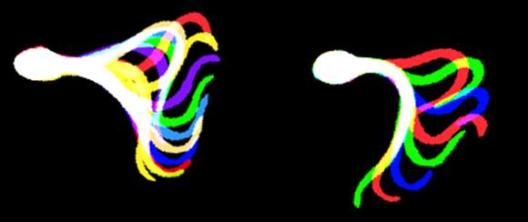Complicated research: easy to understand!

To what extent can female hormones and synthetic chemicals that we take up from the environment influence the function of sperm? This is a question that biochemist Dr. Christian Schiffer has been looking into ever since he did his PhD. Now, he has shown that he is able to present his scientific work to non-specialists in a way that is both easy to understand and fascinating. Yesterday, he received the KlarText (“Plaintext”) Prize, awarded by the Klaus Tschira Foundation, for an easily understandable article on his doctoral thesis. The award is open to all junior researchers who accomplished an excellent, i.e. summa cum laude, PhD thesis in a topic related to natural science or mathematics, and who are able to explain their research in an easy-to-understand popular science article.
Christian Schiffer did the research for his dissertation at the Research Center caesar associated with the Max Planck Society in Bonn. Since 2016 he has been working at the Center of Reproductive Medicine and Andrology at the Faculty of Medicine of Münster University. Working in a research team funded by the Cells-in-Motion Cluster of Excellence headed by Prof. Timo Strünker and Prof. Carsten Fallnich, Christian Schiffer is analysing how sperm navigate and locate the egg. Christian Schiffer was supervised by Timo Strünker already in Bonn.
The fertilization of the egg is a difficult endeavour for sperm, and it requires a sequence of cellular signal processes. Hormones released by the egg serve as signposts for sperm to navigate in the oviduct. Key for this navigation process, termed chemotaxis, are certain ion channels in the sperm's tail. In his PhD thesis, Christian Schiffer demonstrated how synthetic chemicals that are omnipresent in our environment, sun screen for example, can interfere with the chemical communication between the egg and sperm. The chemicals imitate the action of the egg-derived hormones on the sperm and, therby, upset the sperm’s operation. This might, in turn, negatively impact the fertilization process.

In an interdisciplinary project, the researchers at the Cluster of Excellence are now investigating how the hormones in the oviduct and, at the same time, the flow of the oviductal fluid affect the swimming behaviour of the sperm. To this end, they measure how the sperm’s tail moves under certain conditions. Biochemists and physicists are working closely together in the project.
This is the 15th time that the Klaus Tschira Foundation has awarded the KlarText Prize for Scientific Communication. This year, Christian Schiffer is one of seven prize-winners whose texts were chosen from a total of 185 submitted. His article can be read on the website of the KlarText Prize and it is published in a special supplement of the "Zeit" newspaper.

